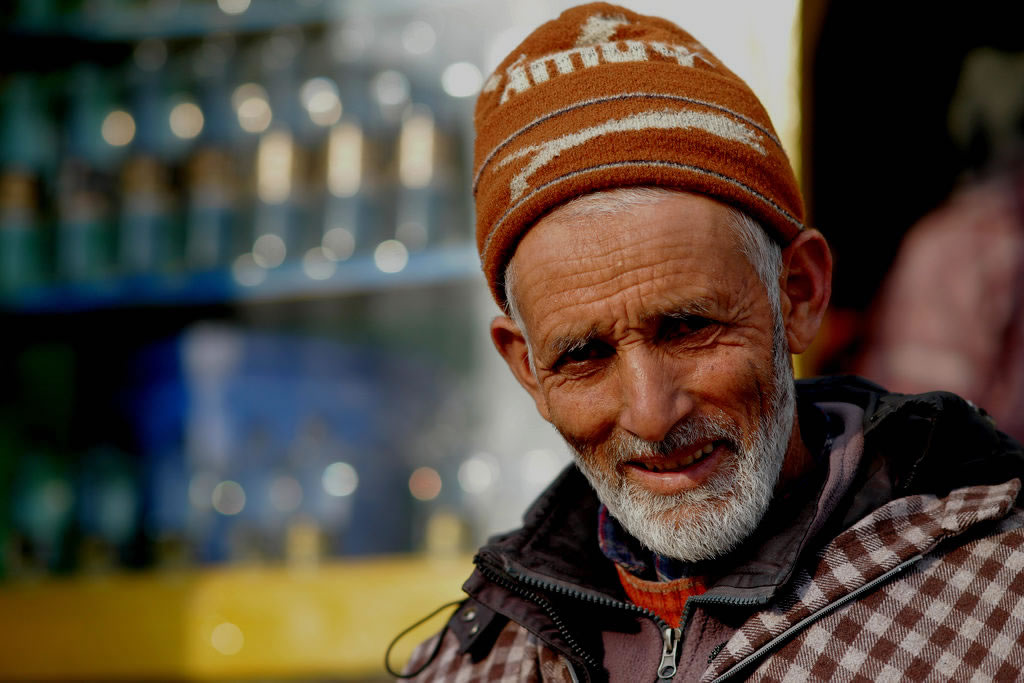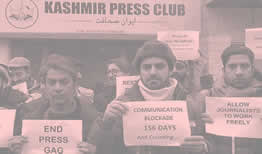The Impact of Tourism on the Economy and Social Dynamics of Jammu and Kashmir Amidst Conflict
The Impact of Tourism on the Economy and Social Dynamics of Jammu and Kashmir Amidst Conflict
Abstract
The tourism industry in Jammu and Kashmir plays a pivotal role in the region's economy, serving as a major source of income and employment. However, the ongoing conflict has deeply influenced the dynamics of this sector. While tourism has the potential to stimulate economic growth by attracting investment and boosting local businesses, the persistent instability has resulted in fluctuating visitor numbers, leading to economic unpredictability.
By Nida Awais
BS Peace and Conflict Studies Semester 3rd University: National Defence University
Socially, tourism fosters cultural exchange and promotes
understanding between visitors and locals, yet the conflict often exacerbates
tensions, leading to a fragile social fabric. The dichotomy between the
economic benefits and the challenges posed by the conflict highlights the
complex relationship between tourism, economic development, and social dynamics
in Jammu and Kashmir
Introduction
Jammu and Kashmir has always been a well-liked travel destination because of its breathtaking natural scenery and rich cultural legacy. However, the region's economy, particularly the tourism sector, and social dynamics have been significantly impacted by the past and ongoing strife resulting from the geopolitical dispute between India and Pakistan. These effects have mostly been shaped by the militarization of the area by the Indian government, particularly following the 1989 insurgency. The tourism industry has always played a significant role in the economy of Jammu and Kashmir, which is known as the "Paradise on Earth" and welcomes millions of visitors there each year. However, there have been major disruptions to the tourism sector as a result of the strong military presence and frequent violent occurrences. Fear of violence, roadblocks, curfews, and overt military presence discourage tourists, resulting in a generalized feeling of unease. Hotels, restaurants, houseboats, and the handicrafts sector are just a few of the local companies that have suffered as a result of the fall in tourism.
During times of violence, areas that rely largely on tourism, like as Pahalgam, Gulmarg, and Srinagar, have been especially hard hit, seeing increased unemployment and unstable economies. Beyond its effects on the economy, militarization has changed Jammu and Kashmir's social dynamics. A tense environment is created by the strict security measures, which strain interactions between locals and visitors. Locals who had previously made their living from tourism are now coping with the fallout from the fighting, which includes declining social conditions and economic challenges. Because military presence disrupts people' everyday routines and influences how they interact with guests, it frequently makes tensions worse. Simultaneously, religious tourism—specifically, the Amarnath Yatra—has shown to be advantageous as well as problematic for the area. Every year, the Yatra brings in hundreds of thousands of Hindu pilgrims and significantly strengthens the local economy. Along the pilgrimage path, the influx of pilgrims provides revenue for traders, lodging, and transportation services.
In this sense, the Yatra provides many
people who depend on tourism with a means of subsistence amid the
unpredictability brought on by the war in the area but with so many security
guards stationed to safeguard the pilgrims, the Amarnath Yatra has also
increased the region's level of securitization. In addition to complicating
social interactions, this increased military presence has exacerbated religious
and communal tensions between the Hindu pilgrims and the primarily Muslim local
community. The securitization of the Yatra highlights the more general
difficulties in managing tourism in a conflict-ridden area where politics,
religion, and the economics coexist in a precarious equilibrium.
Militarized Tourism and local Economy
The deep-rooted violence in Jammu and Kashmir is a
result of India's militarization of the territory, which has had a substantial
negative impact on tourism, the regional economy, and social dynamics. The
region's socioeconomic structure is upset by the strong military presence,
which also maintains an oppressive atmosphere that hinders development,
tourism, and peaceful coexistence. One of the most significant economic sectors
in the area, tourism, is threatened by the ongoing presence of the Indian armed
forces, which has generated an atmosphere of dread, insecurity, and
instability. Known for its breathtaking natural surroundings, Jammu and Kashmir
used to be a popular travel destination for both domestic and foreign
travelers. But the increasing militarization and regular violent clashes have
made it so that tourism is no longer a dependable source of revenue. Tourists
are clearly discouraged by the sight of military checkpoints and armed forces
patrolling the streets. Travelers are hesitant to visit a region that is often
depicted as being rife with warfare, which is made worse by the heavy military
presence.
India's deliberate attempt to establish control over
a disputed territory by militarizing Kashmir prevents the area from developing.
India has succeeded in isolating Kashmir from the outside world by turning it
into a heavily militarized area. This has prevented tourists from visiting and
bringing in money that would have helped the local economy. Once a popular
tourist destination, the scenic valleys, mountains, and lakes are now encircled
by barbed wire, military outposts, and an underlying tension that permeates
every contact. The substantial fall in tourism as a result of this
militarization has a direct impact on the livelihoods of thousands of Kashmiris
who rely on the hospitality and tourism sectors to survive. India's strategy
for governing Kashmir is more focused on oppressing the local populace than it
is on upholding law and order. The extent of military presence in the area
suggests occupation rather than protection, transforming it into an open-air
prison. This atmosphere causes persistent dissatisfaction and alienation, which
impairs chances for employment and interferes with day-to-day living. Because
of the militarization, there is an unending state of war, normalcy is illusive,
and economic growth is stifled.
The social dynamics of the region have also been
significantly impacted by the militarization of Jammu and Kashmir. The military
presence has increased social discontent and tension by deepening rifts within
various populations. Locals feel as though they are constantly being watched
because of the climate of mistrust and suspicion brought about by security
personnel' continual monitoring. This erodes the region's social fabric, which
once took pride in its ability to foster harmony among its citizens. The Indian
army is seen by the people of Kashmir as an occupying force rather than a force
that is there to defend them. The local populace is becoming more and more
hostile as a result of military actions, including alleged violations of human
rights. The Kashmiri people now have to constantly contend with curfews,
barricades, and other types of military control in addition to negotiating
military checkpoints. Significant economic ramifications also result from this
militarization. Numerous small enterprises that rely on tourism are failing. As
fewer tourists visit the area, hotels, guesthouses, and eateries stay empty and
local artists struggle to sell their wares. The prolonged violence has had a
significant negative impact on even bigger industries like agriculture and handicrafts.
Movement limitations and ongoing surveillance interfere with economic activity,
severely hurting local business owners.
Curfews and abrupt closures make it difficult for
farmers to transport their products, and companies find it difficult to continue
operating regularly. All of these elements play a part in an economic downturn
that gets worse over time and makes people's poverty and unhappiness
worse. Pakistan contends that the
militarization of India has increased the Kashmiri people's sense of isolation
and stoked more unrest. The Kashmiri people feel that their rights and
liberties are being gradually taken away by the Indian government, which leads
to a deep sense of unfairness and marginalization that is the root of this
estrangement. India has increased the emphasis on its military approach,
viewing it as the major means of preserving control over the region, rather
than addressing the justifiable complaints of the people.
However, this militaristic strategy is fundamentally
wrong since it ignores the Kashmiri people's aspirations for autonomy and
self-determination, which are the primary causes of the war. The disagreement
stems from the question of self-determination. India is essentially denying the
Kashmiri people the right to decide their own destiny by overcrowding the area
with military soldiers and hardware. This military presence exacerbates
tensions and deepens the conflict in the region by serving as a continual
reminder of their subordination. Pakistan insists that India's intentional
militarization of Jammu and Kashmir is a means to stifle the rightful demands
of the Kashmiri people and to obstruct any significant advancement in the
direction of a peaceful settlement of the dispute.
Additionally, the ongoing militarization has an adverse
effect on the local population's wellbeing and mental health. The military
occupied Kashmir for many years, and this had a severe psychological impact on
both individuals and communities. An enduring sense of trauma is exacerbated by
the existence of military forces as well as the regularity of violence,
disappearances, and detentions. Particularly the younger generation is growing
up in a culture that normalizes conflict and violence. This sets off a vicious
cycle of dissatisfaction, rage, and despair, which in turn spurs further
opposition to the Indian government. India has militarized Jammu and Kashmir as
part of a planned strategy to keep control over the area, not merely for
security reasons. The population is being kept under control and efforts at
resistance are being put down by the strong military presence. However, this
strategy has simply made the conflict more intense and the likelihood of
settlement less likely India has decided to rely on military force rather than
encouraging communication and interaction, which has further deepened the rift
between the Kashmiri people and the Indian state.
How does
tourism contribute to the economy of Jammu and Kashmir?
With its substantial impact on foreign exchange
revenues, infrastructural development, and both direct and indirect job
opportunities, tourism is one of Jammu and Kashmir's main economic drivers.
Nonetheless, it is impossible to assess the economic effects of tourism in the
area without taking into account the larger background of political unrest,
security issues, and how India's policies have shaped the region's economic
development. The intricate interplay between tourism and the economy of Jammu
and Kashmir is characterized by obstacles resulting from political unrest,
military build-up, and policies related to governance, all of which have
significantly influenced the region's economic results.
Millions of tourists have visited Jammu and Kashmir
in the past because of the area's natural beauty, religious significance, and
rich cultural legacy. A sizeable portion of the populace has made their living
from tourism, thanks to the stunning scenery of the Kashmir Valley and popular
pilgrimage sites like Vaishno Devi and Amarnath. Tourism has boosted
small-scale businesses and jobs in the area by boosting hotels, restaurants,
transportation services, handicrafts, and other ancillary industries.
Particularly in the Kashmir Valley, tourism has been the main source of income
for many residents. However, the complicated political climate in the area has
seriously hampered tourism's ability to contribute to Jammu and Kashmir's
economic development, despite its potential.
The 1947 division of India and Pakistan is the
source of the conflict in Jammu and Kashmir, which has had a direct impact on
tourism by creating an unstable and insecure environment. The location is
viewed as risky for travelers due to the ongoing insurgency and military
presence. Visitors' numbers have fluctuated as a result of this sense of
uncertainty, which has an immediate impact on the local economy. The tourism
sector almost collapses during periods of high conflict, including violent
protests or military operations, leaving thousands of people jobless and
without a source of income. As a result, depending too much on tourism as the
main economic sector has drawbacks, as the continuous political unrest exposes
the industry's vulnerability.
An important obstacle to tourism in Jammu and
Kashmir is the overabundance of militarism in the area. The ongoing struggle
between India, Pakistan, and numerous separatist organizations within Jammu and
Kashmir has resulted in a significant militarization of the territory. The
military is heavily present in the area as a result of the Indian government's
emphasis on security and control; although this is done to keep the peace, it
frequently fosters tension and dread. In addition to interfering with daily
living, this militarization turns off potential tourists who may otherwise be
lured to the area's natural beauty and cultural attractions. Roadblocks,
frequent security checks, and the presence of armed police near tourist
attractions make tourists uneasy.
The Indian government's more general policies
towards Jammu and Kashmir, in addition to militarization, have made the
region's economic problems in the tourism industry worse. A major turning point
in the political and economic landscape of the region has been the abrogation
of Article 370 in August 2019, which gave Jammu and Kashmir unique status. The
decision has had a significant impact on the region's economy, especially the
tourism sector. It was widely perceived as an attempt by the Indian government
to incorporate Jammu and Kashmir more fully into the Indian union. Following
the abrogation, the area was placed under total lockdown, including curfews,
communication blackouts, and movement restrictions. Due to these restrictions,
tourism in the area came to a complete halt, resulting in significant losses
for nearby companies. The area continued to see disturbances even after the
limitations were loosened, and many travelers were still wary of going there
because of the unpredictability of the political climate.
The absence of proper infrastructure and development
initiatives exacerbates the economic difficulties facing the tourism industry
in Jammu and Kashmir. The area has a lot of promise for tourism, but the
infrastructure needed to sustain a healthy business is sometimes insufficient
or underdeveloped. Particularly in isolated locations with the potential to
draw tourists, roads, transportation systems, and lodging facilities are
sometimes insufficient. This lack of infrastructure is also a result of the
political climate in the area; development projects are frequently postponed or
cancelled because of security issues or unstable political environments. The
region is underdeveloped when compared to other tourist sites in the country
since the Indian government prioritizes security above development.
Furthermore, not everyone in Jammu and Kashmir always benefits equally from the
tourism industry's economic gains.
Well-known tourist attractions and
metropolitan areas typically gain from the tourism industry, while isolated and
rural communities are frequently left out. There are differences in the region
as a result of this unequal distribution of economic gains, with certain parts
seeing economic growth and others facing economic stagnation. The needs of
rural people have frequently been neglected in favour of urban growth and
infrastructure projects in more accessible places, as per the Indian
government's economic policies towards Jammu and Kashmir. This has resulted in
an unrealized potential for rural tourism, such as eco-tourism and adventure
tourism, which further reduces the economic effect of tourism on the area.
The Indian government has also come under fire for
its lack of involvement with the demands of the local communities in Jammu and
Kashmir when it comes to tourism. schemes for the growth of tourism are
frequently carried out without first addressing local stakeholders, which leads
to schemes that may not even benefit the local populace. Large-scale tourism
initiatives, such opulent hotels or vacation destinations, are frequently owned
and run by foreign investors with minimal input from the surrounding people.
This may result in a situation where the region's economic benefits from
tourism are taken away without substantially benefiting the local populace.
Many local entrepreneurs experience economic marginalization as a result of
their inability to compete with larger, externally-owned firms, which includes
small hotels, guesthouses, and handicraft shops.
Even though tourism has the potential to greatly
boost Jammu and Kashmir's economy, its success is closely correlated with the
political climate of the area and India's regional policy. The tourism industry
is delicate and susceptible to disruptions because of the prolonged conflict,
militarization, and the Indian government's emphasis on security over growth.
The issues facing the tourism sector are further compounded by the absence of
infrastructure, unequal distribution of economic advantages, and little
involvement with local populations. Jammu and Kashmir's tourism industry has
limited potential as long as the underlying political and security challenges
are not addressed, which would create uncertainty in the region's economy.
Amarnath Yatra
The Amarnath Yatra has had a significant impact on Jammu and Kashmir's economy and social structure, especially when considering the region's continuous violence and how it affects local residents. Traveling to the Amarnath Cave, a Hindu pilgrimage site of great religious significance, has played a significant role in the region's tourism industry, influencing economic dynamics and improving people's quality of life even in times of extreme turmoil.
The Amarnath Yatra has been instrumental in forming
the tourism scene of the region from 2019 to 2023. 3,42,883 pilgrims visited
the temple in 2019, which significantly boosted the local economy. Every year,
a sizable number of devotees travel great distances for the pilgrimage,
spending money on lodging, transportation, meals, and other local services. The
increase in tourism generates income for small enterprises, lodging facilities,
and merchants, so creating jobs for thousands of residents, particularly in the
hospitality, transportation, and retail industries. However, the COVID-19
pandemic in 2020 forced the yatra to be canceled, a decision that had
disastrous effects on the region's economy. With a high reliance on pilgrimages
and tourism, Jammu and Kashmir experienced a dramatic drop in revenue and job
prospects. Businesses in the area that rely on pilgrims for revenue experienced
severe difficulties. The region was already experiencing political turmoil due
to the revocation of Article 370 in August 2019, which had resulted in a
decline in tourist and economic activity prior to the epidemic. This further
exacerbated the damage.
This pattern continued in 2021 when the epidemic caused the yatra to be
canceled once more. The two years that the journey was postponed added to the
local communities' financial hardship. Numerous workers and small-scale
enterprises that depend on the pilgrims' yearly inflow of revenue suffered
significant losses. Additionally, the absence of revenue from pilgrimages
caused the tourism industry to stagnate overall, which made the socioeconomic
conditions in the area even worse. Jammu & Kashmir's already precarious
economy suffered greatly as unemployment rates skyrocketed.
But as the pandemic subsided and the journey
restarted in 2022, things started to shift. 3,20,407 pilgrims made the journey
that year, which was a turning point for the area even though it was still less
than the pre-pandemic levels of 2019. The local economy received a much-needed
boost with the yatra's return, as businesses that had been struggling for the
previous two years suddenly saw an uptick in consumers. The rush of pilgrims
helped local businesses, hoteliers, and taxi drivers, and the pilgrimage once
again provided employment for hundreds of people. The local hospitality sector,
which had been negatively damaged by the yatra cancellations in 2020 and 2021,
also benefited from the yatra's return.
The yatra experienced an unparalleled influx of
pilgrims by 2023; as of August 21, 2023, 8,58,831 individuals had visited the
temple. The economy of the area was significantly impacted by this sharp rise
in tourists. Nearly nine lakh pilgrims entered the area, bringing in a sizable
sum of money that stimulated the tourism sector and produced new job prospects.
There was an increase in demand for local goods, lodging, food, and
transportation, which helped both small and major businesses. After years of
violence, political unrest, and the pandemic, Jammu and Kashmir's tourism
industry was in many respects hurt and needed time to recover. This was evident
in the 2023 yatra.
It is impossible to exaggerate the impact of the
Amarnath Yatra on the regional economy. The pilgrimage has long been a mainstay
of the tourism industry in Jammu and Kashmir, and in recent years, its
influence on the region's economic fortunes has grown even more noticeable. The
pilgrims have given the local economy a much-needed boost, especially in the
aftermath of the plague. In addition to increasing tourism, this pilgrimage has
fueled the expansion of related businesses including handicrafts, regional
food, and live entertainment, all of which prosper during the pilgrimage
season. The yatra has a positive economic impact on the entire region, not just
the area directly along the pilgrimage path.
Nevertheless, the Amarnath Yatra's socioeconomic
effects extend beyond its financial gains. The pilgrimage has a big impact on
the social structure of the area as well, especially when considering the
backdrop of the protracted struggle in Jammu and Kashmir. Many groups of
individuals have come into touch with the local populace as a result of the
pilgrimage, which has occasionally led to tense situations, especially in an
area that has been severely impacted by political and religious strife.
In addition, the pilgrimage has provided a forum for
promoting social cohesion. Coordination between various groups is frequently
necessary for the yatra to run smoothly, especially the local Muslims who are
essential in offering services and assistance to the pilgrims. The potential
for intercommunal collaboration in the region, despite political and religious
conflicts, is demonstrated by the local Muslim groups' involvement in
organizing the yatra. With the growing political and social challenges that
Jammu and Kashmir has experienced recently, this dynamic has taken on
particular significance. The continuous warfare in the area has also influenced
how people view and experience the Amarnath Yatra. The conduct of the
pilgrimage has been heavily influenced by security concerns, as seen by the
extensive deployment of security troops both along the route and in the
surrounding districts. Tension between various religious groups and the local
community as well as the state has frequently been sparked by the deployment of
security forces. Notwithstanding these difficulties, a sizable number of
pilgrims have continued to make the journey, indicating the yatra's ongoing
relevance for the Hindu community.
Additionally, the Amarnath Yatra represents the
larger sociopolitical realities of Jammu and Kashmir. In addition to being a
religious occasion, the pilgrimage represents the region's nuanced relationship
with the Indian state. The central government's efforts to encourage tourism
and religious pilgrimage in Jammu and Kashmir as a method of promoting
political unification and economic development may be observed in the enormous
numbers of pilgrims, especially in 2023. While the region struggles with the
fallout from the repeal of Article 370 and continuous strife, the yatra has
served as a display for the region's normalcy and stability.
Due in major part to the Amarnath Yatra, which has
regularly brought huge numbers of pilgrims to the area, Jammu and Kashmir saw a
dramatic surge in tourism between 2019 and 2023. The considerable increase in
visitors, especially in 2023 with over 8.5 lakh pilgrims, highlights the fact
that pilgrimages continue to be one of the most potent sources of tourism in
the area. Although the Indian government has been pushing tourism in Jammu and
Kashmir as part of a larger strategy, the truth is that, given the region's
continued militarization and religious significance, most tourism there would
probably struggle to survive even without the Amarnath Yatra. Due to the area's
high security presence as a result of years of political upheaval, leisure
travelers are sometimes discouraged, making religious pilgrimages an unusual
exception that yet manages to gather sizable crowds of people. This emphasizes
the special significance that the yatra plays in maintaining the tourism
industry in the area despite the larger obstacles that come with militarization
and conflict.
Conclusion
The region's social cohesion and economic health have suffered as a result of India's militaristic approach to Jammu and Kashmir. In addition to impeding tourism, which is a vital economic engine, the strong military presence has heightened social and political unrest and eroded opportunities for peace and progress. In order to promote true peace and prosperity, India needs to reevaluate its policies, give demilitarization first priority, and hold meaningful discussions with the people of Jammu and Kashmir. The region's potential for stability and recovery won't be realized in the absence of such adjustments. More than just security measures are needed to address the problems in Jammu and Kashmir; a comprehensive strategy is needed. The main goal should be to establish a setting that fosters economic growth and reduces social unrest.
To meet the urgent needs of the area, this entails not only
lowering the military presence but also making investments in infrastructure,
healthcare, and education. Furthermore, in order to restore confidence and
promote a feeling of shared purpose, a sincere and inclusive discourse amongst
all stakeholders including local communities is necessary. Jammu and Kashmir
can only start to mend and reach its full potential for enduring peace and
development via these extensive measures. International assistance and
mediation may also be very important in promoting communication and
guaranteeing the fairness and efficiency of the process. Interacting with
international organizations and promoting collaboration across borders may
offer fresh insights and tools to tackle the many problems confronting the
area. Prioritizing initiatives to uphold human rights and resolve complaints
would help guarantee that the opinions of the community are acknowledged and
heeded. The road to a successful and stable Jammu and Kashmir ultimately winds
through a dedication to inclusive development, mutual respect, and
peacebuilding. Through tackling the economic and social aspects of the dispute
and emphasizing rapprochement and fostering trust, there is optimism for a
future in which the area can prosper peacefully and enhance the overall welfare
of its inhabitants and the country.
Kashmir: The Unwritten History" by Christopher
Snedden
Kashmir in Conflict: India, Pakistan and the
Unending War" by Victoria Schofield
Paradise at War: A Political History of
Kashmir" by Radha Kumar
Tourism in Jammu and Kashmir: Potential and
Prospects" by Manzoor Ahmad Qadri
Kashmir: Roots of Conflict, Paths to Peace" by
Sumantra Bose
Tourism and Conflict in Kashmir: An Analysis of the
Economic Impact of Turbulence on the Tourism Sector" by Mir Abdul Gani and
Fayaz Ahmad Dar
Impact of Armed Conflict on Tourism: A Case Study of
Kashmir Valley" by Anwar Rasool and Nasir A. Ganai
The Political Economy of Tourism in Kashmir" by
Mohmad Yousuf Bhat
Tourism in Kashmir: The Changing Paradigms" by
Saleem Beg and Aijaz Ashraf Wani
Tourism, Terrorism and Insurgency in Kashmir: An
Analysis of the Problems and the Way Forward" by Dr. Tabassum Rasool
Related Research Papers



























